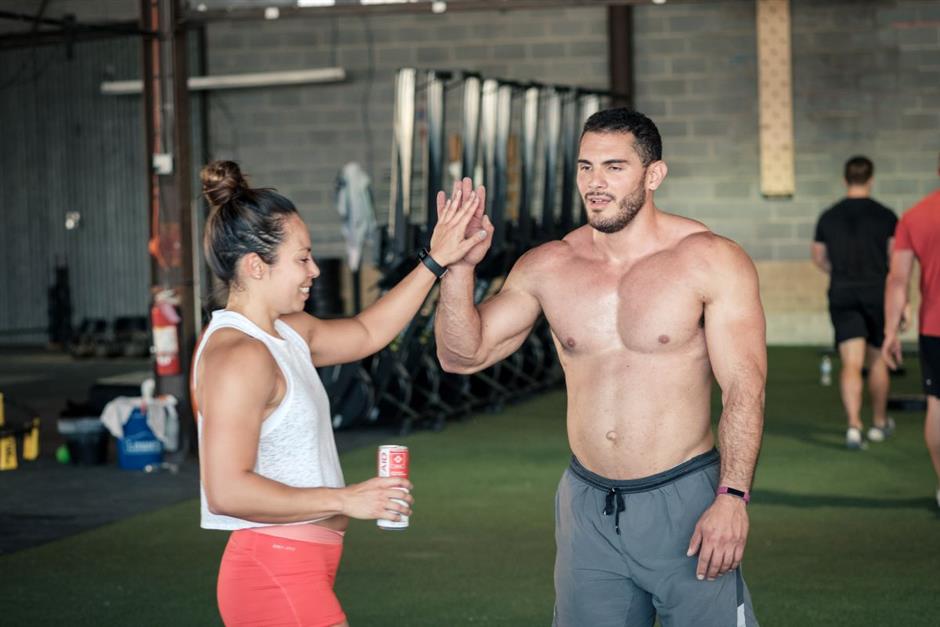Even if you're armed with all of the knowledge in the world, a lot of your success as a nutrition coach comes down to your rapport with your clients. While helping to identify ideal diets and macro breakdowns for your client is part of it, you have to present information in a coaching style that resonates with people and makes them want to change their current behaviors.
This often means reading peoples’ personalities individually and figuring out the things that work for them, specifically. Because of that, one coaching style is not superior to the rest.
Depending on who you ask, there are three or four main coaching styles. Here, we cover all four.
1. Democratic Coaching Style

Democratic coaching involves garnering input from your clients and using that feedback to help with goal setting. The democratic coach outlines the overall program, and it’s one of the most client-centered coaching styles. Democratic coaching aims to boost self-empowerment and improve decision-making skills.
Advertisement
A democratic coaching model may look like this:
- As the coach, you listen to your client's goals and develop a loose plan.
- After being on the plan for a little while, your client decides that something about the plan isn't working for him/her.
- You use that feedback to work together to adjust the plan.
2. Autocratic/Authoritarian Coaching Styles
The terms autocratic and authoritarian are often used interchangeably to refer to both coaching and leadership styles.
Autocratic coaching involves telling, rather than asking. Instead of having an open dialogue between coach and client, the autocratic coach calls all of the shots and the client follows along with little to no involvement in decision making. In an authoritarian style of coaching, the coach decides what to do, how to do it and when to do it. They then present that information to the client in a structured way.
This type of coaching works best when the client is new to the fitness and nutrition world and needs a lot of direction.
Autocratic/authoritarian coaching styles may look like this:
Advertisement
- Your client tells you his/her goals.
- You develop a plan and dictate that plan to your client.
- As you go, you adjust that plan as you see fit, rather than making changes in response to client feedback.
3. Laissez-Faire Coaching Style

Laissez-faire coaching styles are the opposite of an autocratic/authoritarian style of coaching. In this coaching model, all of the decision-making falls on the client. It has the least direction but the most autonomy. Instead of reaching out and guiding your client, you provide encouragement, guidance and support when asked.
Laissez-faire coaching styles may look like this:
- A client comes to you and tells you his/her goals.
- The client develops a plan on how to get there.
- The client executes his/her plan, only coming to you for feedback and guidance when he/she decides.
4. Holistic Coaching Styles
When you take a holistic approach to coaching, you acknowledge that everything is connected. Holistic coaching is about addressing all areas of your life, like nutrition, fitness, sleep, stress management, and social connection. This form of coaching also acknowledges that you can't really excel in one area without also paying attention to the other areas.
For example, if the client's goal is weight loss, an authoritative coach may develop a non-negotiable meal plan and fitness schedule that focuses on calories and macros, but a holistic coach will also call attention to the importance of managing stress levels and making time for fun.
Advertisement
While any of the coaching styles can be effective, and there isn't necessarily one style that works best for everyone, holistic coaching is the most widely used. This is also the coaching method we try to adopt at WAG, for both our performance coaching and lifestyle coaching programs.
Tips to Becoming an Effective Coach

Throughout the coaching process, you'll learn that the best coaching style can be situational. It's common for a coach to use different coaching styles at different times depending on the specific goals. The best coaching styles can also depend on your client. Some clients respond really well to authoritarian styles of coaching, while others like to feel more involved and prefer a democratic coaching style.
Part of what makes a great coach is being able to adapt to different situations and personalities so you can make sure you apply the most effective coaching practices for each specific client.
It's also not necessary to totally box yourself into a certain coaching label. You can combine ideas from the best of two coaching styles. This is called a combined coaching model.
Advertisement
Being able to toggle between different coaching behaviors takes practice. You may be the one guiding your clients to success, but as much as this is a learning process for them, it's also a learning process for you.
As you work with more clients and get a better understanding of which approaches work for what kind of people, you can develop new skills and use positive feedback from your clients—either through their words or their results—to adjust your approach and your coaching styles.
Create a judgment-free zone
No matter what kind of coaching style you have, one of the things that makes a good coach is creating a judgment-free environment. People perform better when they feel like they're safe to express their concerns and difficulties as well as their accomplishments.
Praise your client and reinforce the idea that mistakes are unavoidable parts of the journey. When you allow your client to come to you without judgment, you provide the comfort your client needs to be fully open and honest with you.
Provide positive feedback

Advertisement
Coaching is all about empowerment, and that's where positive feedback comes in. Even if your client is doing something "wrong" or having a hard time sticking to the plan, there's usually always something you can praise. Find the good things that your client is doing, and always make it a point to mention them. For example, your client may not be hitting their macros as well as you’d like to see, but if they’re consistently nailing their workouts, give them the high-fives they deserve for that.
Even if you have a client who prefers autocratic coaching styles, make sure you provide positive feedback and focus on progress, no matter the speed with which that progress is made.
Bring more awareness to bad habits
Often, people don't realize they have persisting bad habits until you point it out to them. After all, they've been doing these things for so long that they don't even notice them anymore. Part of your job is to gently bring awareness to these bad habits so that the client becomes conscious of it.
But being a great coach isn't just about bringing this awareness—it's also about helping your client with problem-solving. Once you've identified and acknowledged the bad behavior, how are you going to work together to help fix it? This is a great time to work with your client on both short-term and long-term goal setting.
Ask open-ended questions
While directly bringing awareness to your client's bad habits or roadblocks is beneficial, it's also helpful to ask them open-ended questions that guide them toward making conclusions themselves. For example, you can ask:
Advertisement
- What's your biggest challenge in sticking to your routine?
- What are some things you do to stay motivated and/or disciplined?
- What are some things that tend to throw you off track?
These questions encourage your client to reflect and notice their own patterns, and that awareness can benefit so many areas of their health. And when they come to these conclusions themselves, they’re more likely to have lasting behavior changes than if you just pointed out bad behaviors and told them what to do.
Be relatable and vulnerable
There isn't a single person on the planet who knows everything. In the client-coach relationship, you may be the expert on nutrition and fitness, but that doesn't mean that you don't have hurdles or setbacks of your own. It's okay to admit that you struggle with certain areas or that you've made a mistake.
Rather than trying to be a picture of perfection, allow your clients to see some of your imperfections. This vulnerability makes you more relatable and less intimidating. It also fosters a great coach-client relationship that's built on trust and mutual respect.






